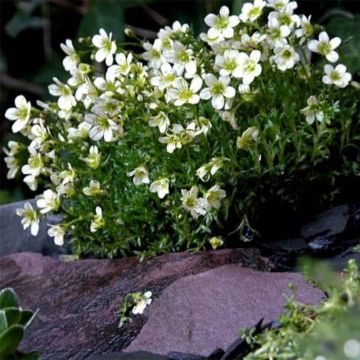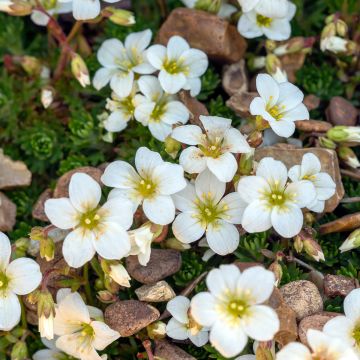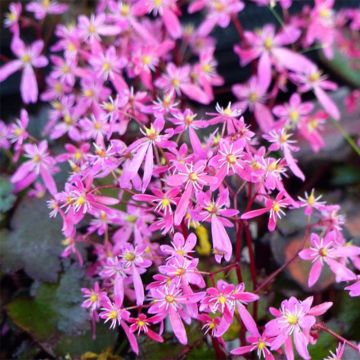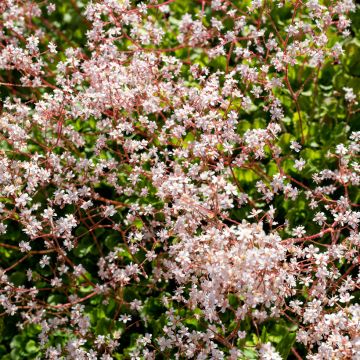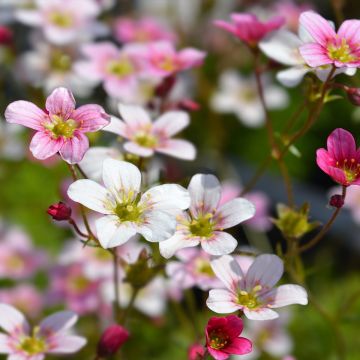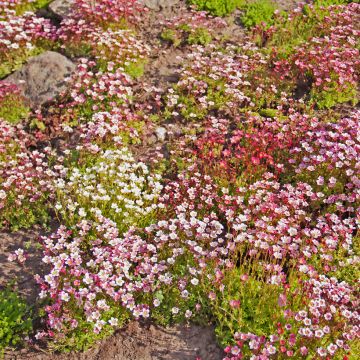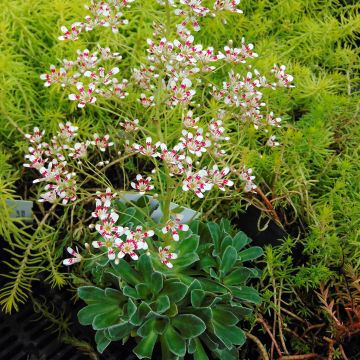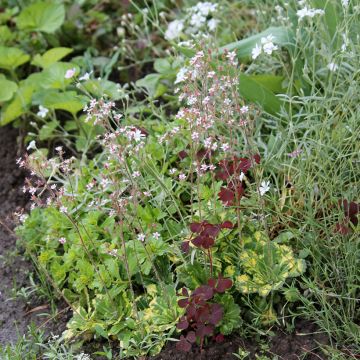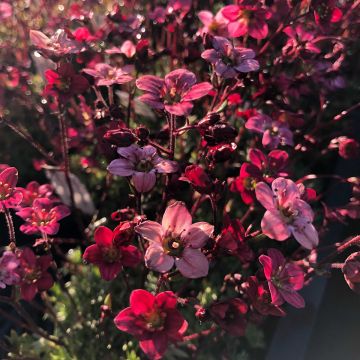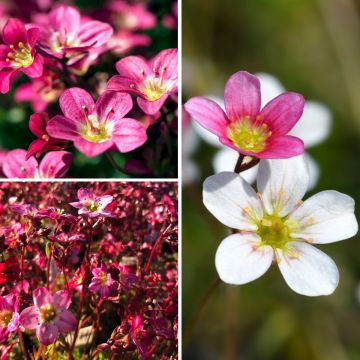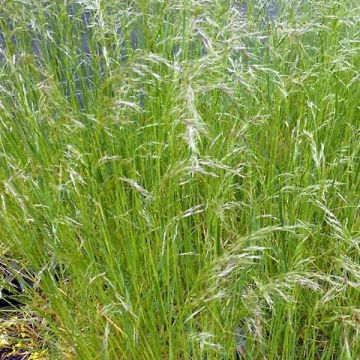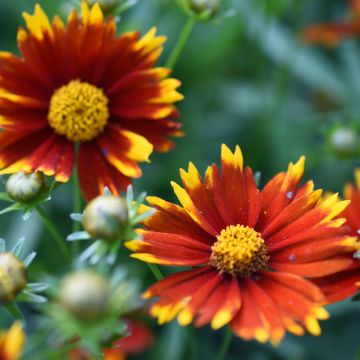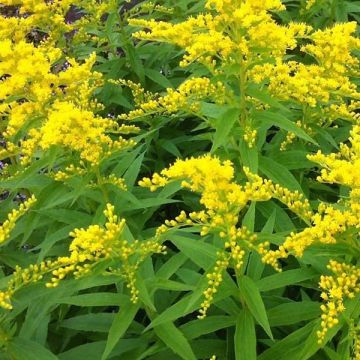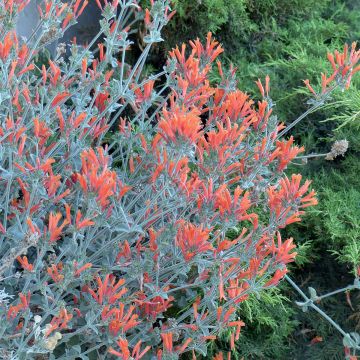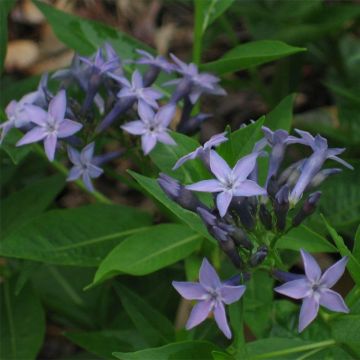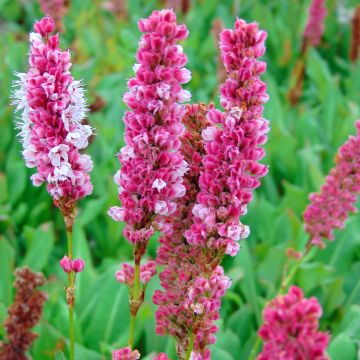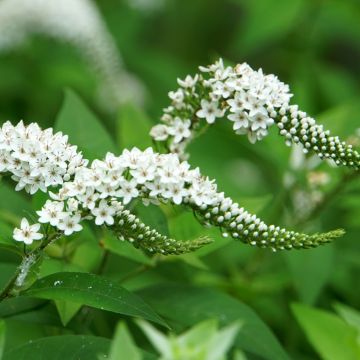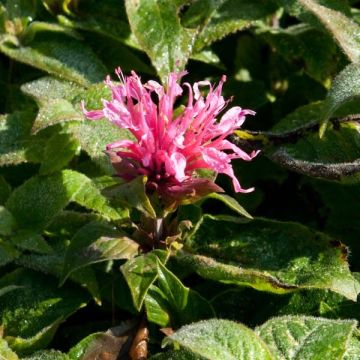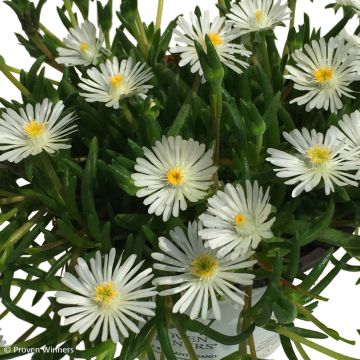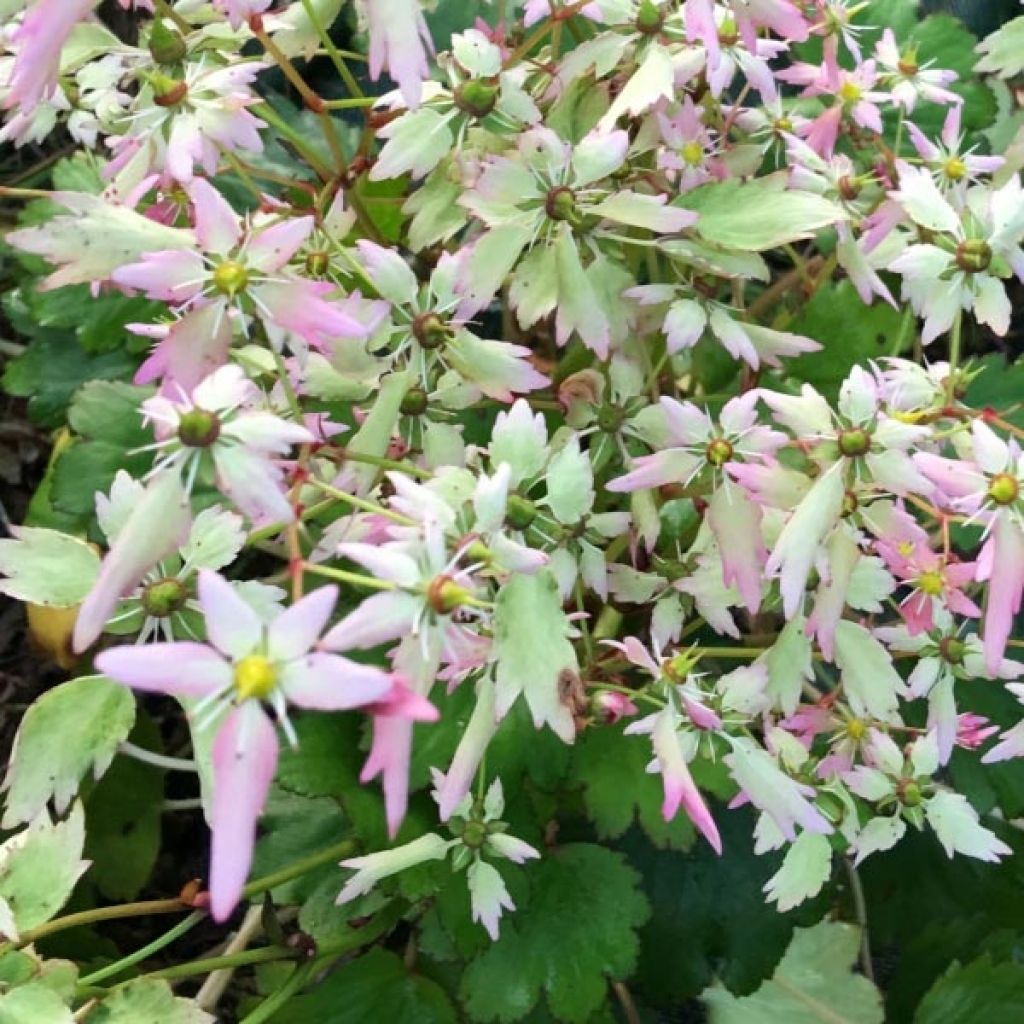

Saxifraga OPERA Lakmé - Saxifrage
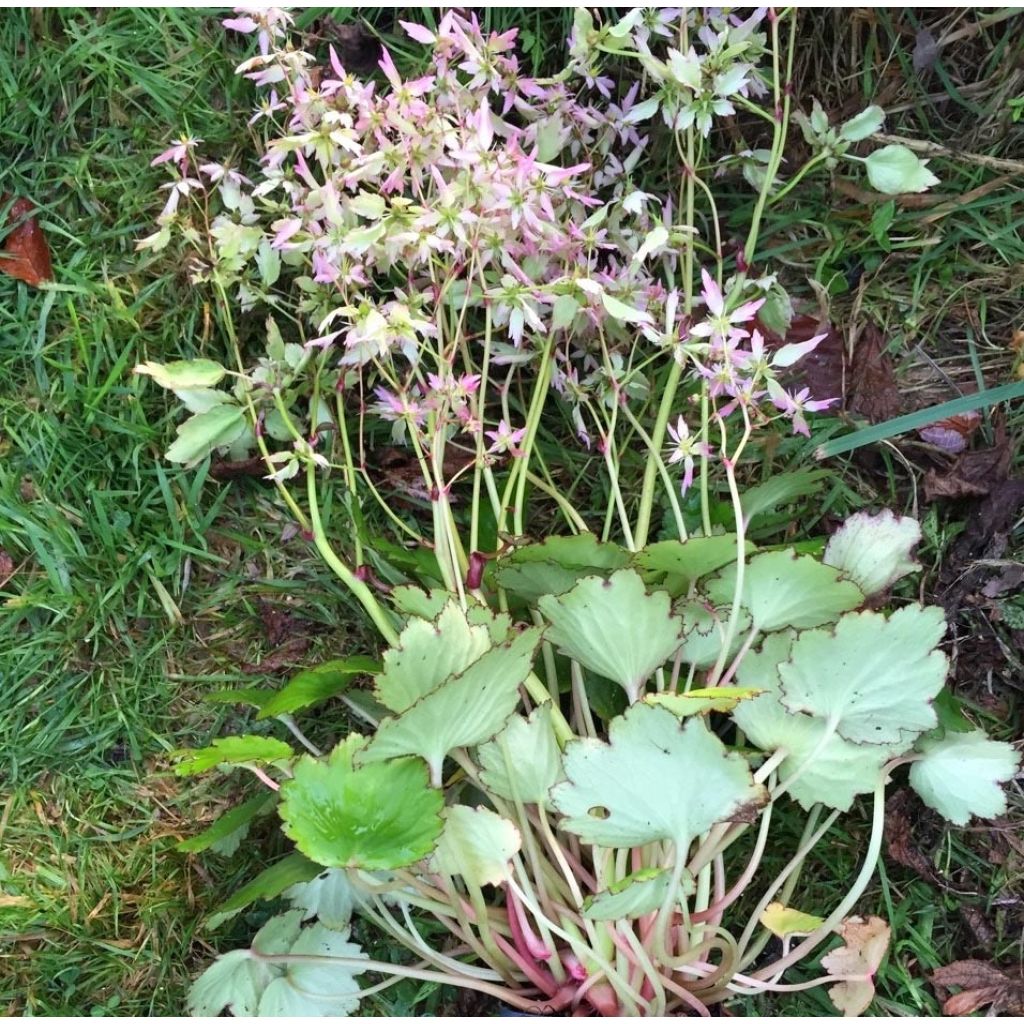

Saxifraga OPERA Lakmé - Saxifrage
Saxifraga Lakmé
Saxifraga OPERA Lakmé
Saxifrage
Originally, a young plant planted in the spring, it has developed a magnificent flowering in the autumn and has adapted very well.
Christine, 19/06/2021
Why not try an alternative variety in stock?
View all →This plant carries a 12 months recovery warranty
More information
We guarantee the quality of our plants for a full growing cycle, and will replace at our expense any plant that fails to recover under normal climatic and planting conditions.
From €5.90 for pickup delivery and €6.90 for home delivery
Express home delivery from €8.90.
Does this plant fit my garden?
Set up your Plantfit profile →
Description
Saxifraga 'Lakmé', from the Opera series, is a recent French hybrid, distinguished by its abundant late flowering in autumn. The lace-like flowers, carried on long stems, are white-pink with superb jade green reflections. The semi-evergreen toothed leaves are dark green. They form a small tuft that will work wonders in a shady rock garden, in humus-rich and rather acidic soil that does not dry out. It can also be grown in a pot.
'Lakmé' is a hybrid of Saxifraga fortunei, a little gem native to the woodlands of Japan. It belongs to the Saxifragaceae family, which provides gardeners with both tiny plants, such as alpine rock saxifrages, and giants like rodgersia, magnificent waterside plants.
'Lakmé' was recently obtained by Olivier Galéa (Sous un Arbre Perché Nursery). It is a particularly floriferous variety, bringing life to the garden between October and November, when flowers are scarce. The delicately sculpted 5-petalled stars are born white-pink and then take on an attractive jade green hue, which is very elegant. The dark green, fleshy leaves with toothed margins form a small low tuft that is 40cm (16in) in diameter and about 15cm (6in) high. When in bloom, however, the plant reaches 40cm (16in), with the stems rising well above the foliage.
The whole plant is a little gem that deserves attention. To succeed, they require soft, light, humus-rich, slightly acidic, and rather fertile soil that is well-drained and does not dry out. Shade or partial shade, without direct sunlight, suits them. Woodland rich in leaf compost is ideal! They have good hardiness (-15°C (5°F) approximately), but they do not like cold drafts, and waterlogged winter soils are fatal to them. The foliage is deciduous below -5°C (23°F) and will return in spring if the growing conditions are suitable. You can mulch their base, but be careful not to create a buildup of moisture around them during winter (especially with dead leaves).
Growing them in pots is a good alternative if the soil in your garden is too heavy. In this case, provide the plant with a well-aerated substrate, and it will reward you with a rich flowering. Regularly renew the substrate. Given the refined character of this variety, opt for an enamelled pot, for example, which will have the best effect. If frost is intense, protect the pots or, if possible, shelter them in a cold greenhouse.
Planted en masse, Saxifraga 'Lakmé' will create a spectacular effect in your shady borders. Of course, you can also create a mixed border with various saxifrage varieties. Keep in mind, however, that these plants are not excellent ground covers on their own - consider Viola labradorica, a pretty little violet that self-seeds without bothering its neighbours. You can also plant them with other Asian plants, but not overly invasive ones, such as Dryopteris sieboldii, Athyrium niponicum 'Pictum', Japanese forest grass, or the delicate Selaginella involvens, all topped by the graceful decaisnea (blue bean tree).
Report an error about the product description
Saxifraga Lakmé in pictures
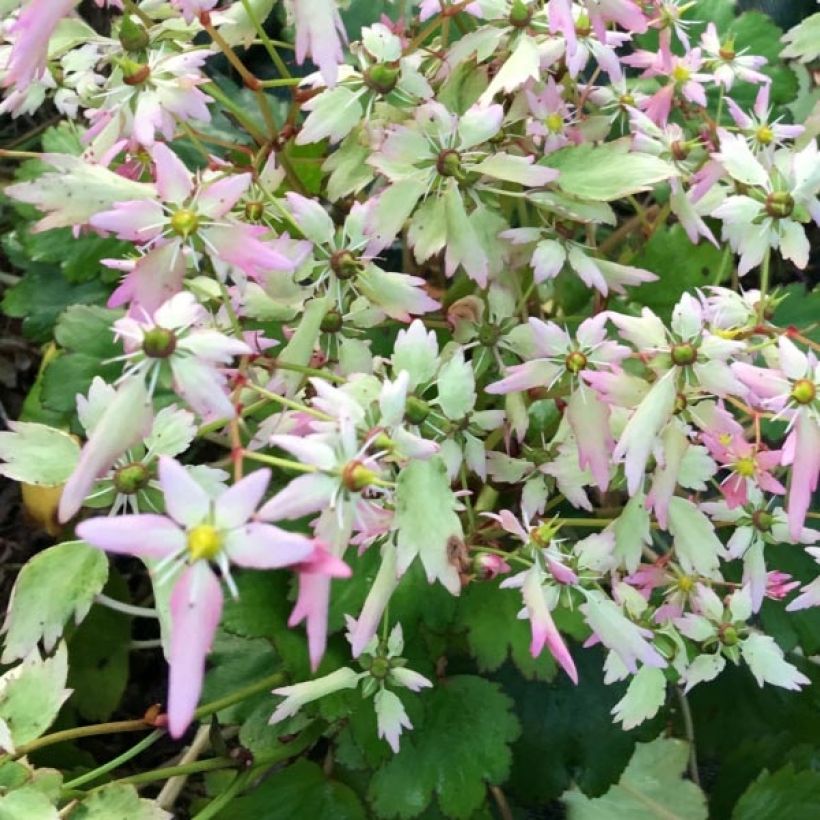

Flowering
Foliage
Plant habit
Botanical data
Saxifraga
OPERA Lakmé
Saxifragaceae
Saxifrage
Cultivar or hybrid
Other Saxifraga
Planting and care
This saxifrage appreciates the moist and humus-rich soils of mountain woodlands and does not tolerate excessive moisture in winter or drought in summer. However, it tolerates root competition from trees and bushes quite well, as long as the soil does not dry out in summer. Choose a semi-shaded to shaded, consistently moist exposure. Remove any leaves that could cover the clump.
Planting period
Intended location
Care
-
, onOrder confirmed
Reply from on Promesse de fleurs
Summer flowering perennials
Haven't found what you were looking for?
Hardiness is the lowest winter temperature a plant can endure without suffering serious damage or even dying. However, hardiness is affected by location (a sheltered area, such as a patio), protection (winter cover) and soil type (hardiness is improved by well-drained soil).

Photo Sharing Terms & Conditions
In order to encourage gardeners to interact and share their experiences, Promesse de fleurs offers various media enabling content to be uploaded onto its Site - in particular via the ‘Photo sharing’ module.
The User agrees to refrain from:
- Posting any content that is illegal, prejudicial, insulting, racist, inciteful to hatred, revisionist, contrary to public decency, that infringes on privacy or on the privacy rights of third parties, in particular the publicity rights of persons and goods, intellectual property rights, or the right to privacy.
- Submitting content on behalf of a third party;
- Impersonate the identity of a third party and/or publish any personal information about a third party;
In general, the User undertakes to refrain from any unethical behaviour.
All Content (in particular text, comments, files, images, photos, videos, creative works, etc.), which may be subject to property or intellectual property rights, image or other private rights, shall remain the property of the User, subject to the limited rights granted by the terms of the licence granted by Promesse de fleurs as stated below. Users are at liberty to publish or not to publish such Content on the Site, notably via the ‘Photo Sharing’ facility, and accept that this Content shall be made public and freely accessible, notably on the Internet.
Users further acknowledge, undertake to have ,and guarantee that they hold all necessary rights and permissions to publish such material on the Site, in particular with regard to the legislation in force pertaining to any privacy, property, intellectual property, image, or contractual rights, or rights of any other nature. By publishing such Content on the Site, Users acknowledge accepting full liability as publishers of the Content within the meaning of the law, and grant Promesse de fleurs, free of charge, an inclusive, worldwide licence for the said Content for the entire duration of its publication, including all reproduction, representation, up/downloading, displaying, performing, transmission, and storage rights.
Users also grant permission for their name to be linked to the Content and accept that this link may not always be made available.
By engaging in posting material, Users consent to their Content becoming automatically accessible on the Internet, in particular on other sites and/or blogs and/or web pages of the Promesse de fleurs site, including in particular social pages and the Promesse de fleurs catalogue.
Users may secure the removal of entrusted content free of charge by issuing a simple request via our contact form.
The flowering period indicated on our website applies to countries and regions located in USDA zone 8 (France, the United Kingdom, Ireland, the Netherlands, etc.)
It will vary according to where you live:
- In zones 9 to 10 (Italy, Spain, Greece, etc.), flowering will occur about 2 to 4 weeks earlier.
- In zones 6 to 7 (Germany, Poland, Slovenia, and lower mountainous regions), flowering will be delayed by 2 to 3 weeks.
- In zone 5 (Central Europe, Scandinavia), blooming will be delayed by 3 to 5 weeks.
In temperate climates, pruning of spring-flowering shrubs (forsythia, spireas, etc.) should be done just after flowering.
Pruning of summer-flowering shrubs (Indian Lilac, Perovskia, etc.) can be done in winter or spring.
In cold regions as well as with frost-sensitive plants, avoid pruning too early when severe frosts may still occur.
The planting period indicated on our website applies to countries and regions located in USDA zone 8 (France, United Kingdom, Ireland, Netherlands).
It will vary according to where you live:
- In Mediterranean zones (Marseille, Madrid, Milan, etc.), autumn and winter are the best planting periods.
- In continental zones (Strasbourg, Munich, Vienna, etc.), delay planting by 2 to 3 weeks in spring and bring it forward by 2 to 4 weeks in autumn.
- In mountainous regions (the Alps, Pyrenees, Carpathians, etc.), it is best to plant in late spring (May-June) or late summer (August-September).
The harvesting period indicated on our website applies to countries and regions in USDA zone 8 (France, England, Ireland, the Netherlands).
In colder areas (Scandinavia, Poland, Austria...) fruit and vegetable harvests are likely to be delayed by 3-4 weeks.
In warmer areas (Italy, Spain, Greece, etc.), harvesting will probably take place earlier, depending on weather conditions.
The sowing periods indicated on our website apply to countries and regions within USDA Zone 8 (France, UK, Ireland, Netherlands).
In colder areas (Scandinavia, Poland, Austria...), delay any outdoor sowing by 3-4 weeks, or sow under glass.
In warmer climes (Italy, Spain, Greece, etc.), bring outdoor sowing forward by a few weeks.

































